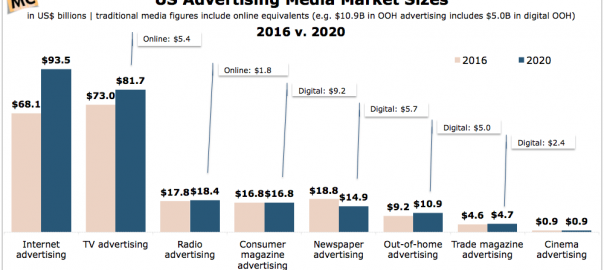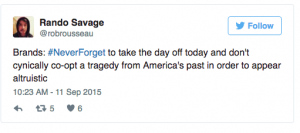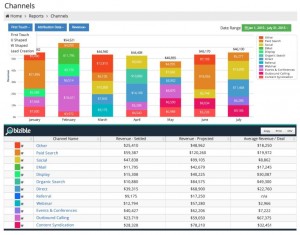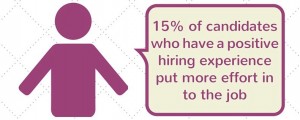— September 23, 2017
It’s hard to believe it’s been 5 years since I first posted one of my most cited posts, 16 Differences between Traditional Media and Social Networking and over a year since I updated the post. A lot has changed since then. For instance, we now talk about digital marketing and traditional media rather than simply social. That’s because digital marketing is more than just social media. It involves blogging, mobile, social media, email marketing, digital analytics, and managing digital marketing through tactics such as account-based marketing and CRM.
Differences between digital marketing and traditional media
Digital marketing isn’t simply another channel for sharing advertising. It’s not like you craft ads like companies have for generations, then share the ads across different channels, such as radio, TV, and print. And, while you may change the execution of your ad across media, you fundamentally kept the message the same and use similar main elements in your ads regardless of channel.
Digital isn’t a channel. It’s a totally different way of looking at the world and engaging with your audience.
In my original post, which was updated a year ago, I created a table that identified differences between traditional media and social networking. I’m reproducing that here because those differences still hold in a world where we talk about digital marketing rather than social networking.
| Social Media
Two-way conversation Open system Transparent One-on-one marketing About you Brand and User-generated Content Authentic content FREE platform Metric: Engagement Actors: Users/ Influencers Community decision-making Unstructured communication Real-time creation Bottom-up strategy Informal language Active involvement Deep Analytics Paid, Owned, Earned |
Traditional Media
One-way conversation Closed system Opaque Mass marketing About ME Professional content Polished content Paid platform Metric: Reach/ frequency Actors/ Celebrities Economic decision-making Controlled communication Pre-produced/ scheduled Top-down strategy Formal language Passive involvement Poor analytics Paid |
Digital marketing
Rather than adding or changing this table, I think the transition to digital marketing is a bigger paradigm shift, so we need to approach it in a different way.
Unfortunately, most digital gurus miss the point and it’s a critical one.
For instance, Marketo defines digital marketing as:
At a high level, digital marketing refers to advertising delivered through digital channels such as search engines, websites, social media, email, and mobile apps. While this term covers a wide range of marketing activities, all of which are not universally agreed upon, we’ll focus on the most common types below.
And, here’s Hubspot’s definition, which is very similar:
Digital marketing is an umbrella term for all of your online marketing efforts. Businesses leverage digital channels such as Google search, social media, email, and their websites to connect with their current and prospective customers.
Unfortunately, both of these miss the point. Digital isn’t a channel,
1. Not advertising, but advertainment
First of all, digital media and traditional media differ in that digital marketing isn’t advertising, while traditional media is primarily advertising. Fundamentally, digital media is a tool to create awareness and develop attitudes about the brand, rather than promote purchase.
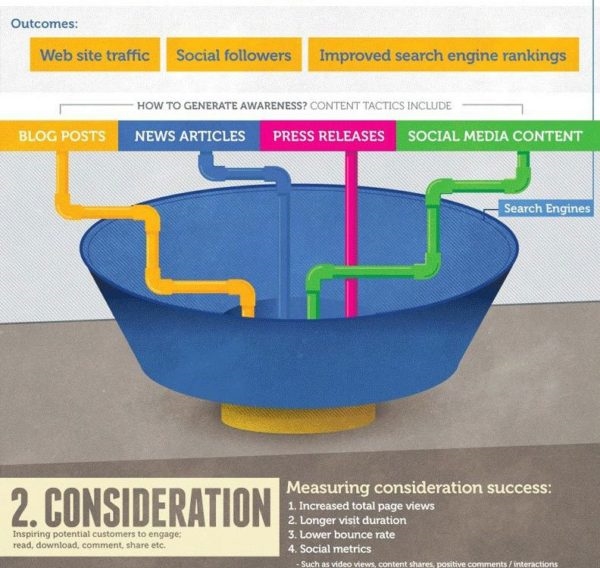
Digital marketing fills the top of the funnel based on both your content and shared content from others. But, instead of bashing people over the head with slick advertising copy, your goal is to use advertainment, which embeds corporate messages within entertainment.
Traditional media also used advertainment, which accounts for much of its success. Advertising is embedded within TV, radio, or print content that consumers enjoy. It’s the advertising that makes these entertainment options either free or delivered at a much lower cost to consumers.
But, digital is already FREE. Now, ads are just annoying because they interrupt our access to what we really want from digital; funny cat videos, exchanges with friends and family, information. In fact, you’re now costing us money in the form of data on our mobile or slowing down page loads for our social platforms and websites.
Now, instead of making our lives better, your ads are making our lives worse.
2. Peer recommendations
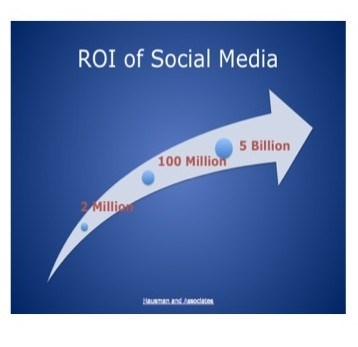
Word of mouth is always a big motivator of purchase behavior. Before digital, the voices of word of mouth were quiet, but digital marketing gave a megaphone to those voices. Celebrities and micro-celebrities have a strong impact on the brands consumers choose, but our friends and acquaintances on social networks also have a big impact on our consumer decisions. In fact, their impact goes beyond recommendations. Even sharing photographs on social networks offer subtle endorsements for the brands displayed in them.
An important consideration about peer recommendations is that they amplify the firm’s marketing efforts without costing them money and these recommendations are more motivating because we view them as objective.
3. Digital is data-driven
With traditional media, you never knew where you stood in terms of ROI. Sure, with direct marketing, you had good analytics, but with broadcast and print, you were mostly in the dark. And, yes, I know this is already in my table above.
In contrast, digital marketing doesn’t just use metrics to assess ROI, it uses them to IMPROVE ROI. So, not only can you predict your returns, you have the information necessary to prioritize your marketing efforts, which improves ROI.
For instance, you can use Google Analytics, or a similar tool, to determine the percentage of traffic coming from various social networks to determine where to spend your marketing dollars. You can even determine the percentage that converts from each marketing campaign. Or, use information about conversions to determine which target markets convert best. Then, you can focus efforts to reach more of those high-converting segments or craft marketing strategies that cause more people in low-converting segments to buy.
The granularity of the data available in digital marketing allows knowledgeable analysts to optimize everything they do across digital networks, from content to channels to offers.
4. Digital marketing isn’t just different, it’s better
Many businesses still spend the lion’s share of marketing dollars on traditional media, despite the problems with such expenditures. Look at data below from Price Waterhouse Cooper projecting advertising spending in 2010 compared to 2016. Adding up all the numbers for traditional media versus digital, you see that advertisers still spend more money on traditional media, despite the uncertainty (and increasing doubt) that this is the best place to put their marketing dollars.
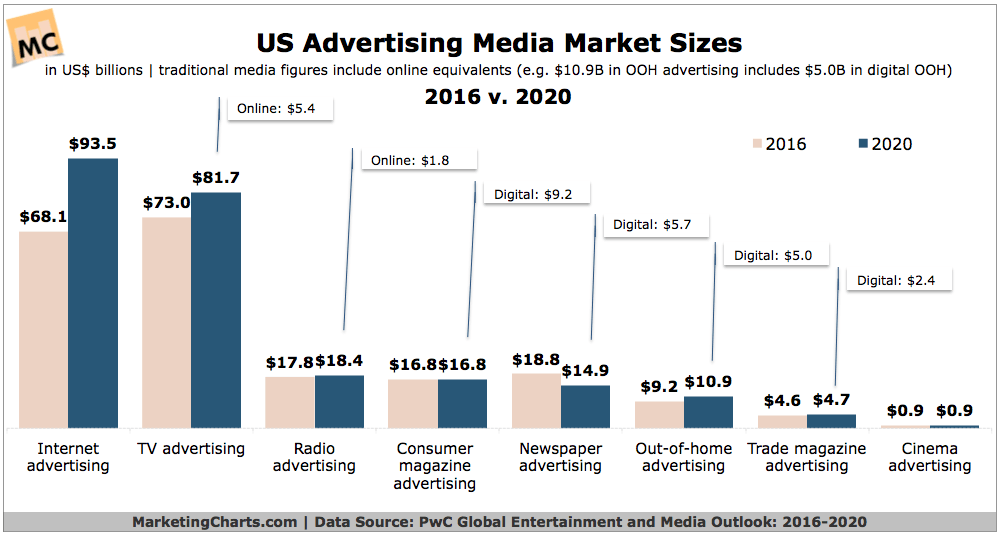
Why do they do this? Primarily because that’s what they’ve always done and that’s what they know.
If you look at the dire state of traditional media, you find it captures fewer eyeballs (which is the appropriate metric) every year. Instead, consumers increasingly watch TV via Netflix or another service where they’re not subjected to advertising, or record programs for later viewing, when they can just fast forward past advertising. The same thing is happening with radio as most of us switch to subscription programming or link phone playlists with our car radios. Almost no one reads newspapers, at least the print kinds, and entire demographics are missing from print newspaper readership.
The question firms should be asking is “why am I still investing in traditional media”?
Digital & Social Articles on Business 2 Community
(108)
Report Post